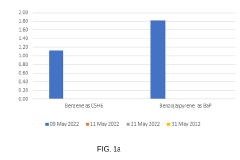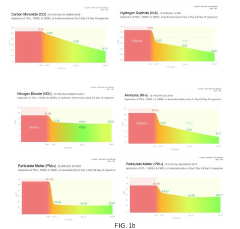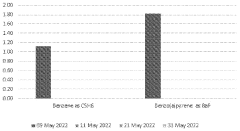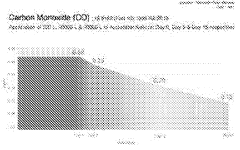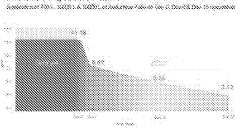Neopentane in Environmental Cleanup Technologies
JUL 25, 20259 MIN READ
Generate Your Research Report Instantly with AI Agent
Patsnap Eureka helps you evaluate technical feasibility & market potential.
Neopentane Background and Objectives
Neopentane, also known as 2,2-dimethylpropane, is a branched-chain alkane with the molecular formula C5H12. This colorless, flammable gas has gained significant attention in recent years due to its potential applications in environmental cleanup technologies. The evolution of neopentane's role in this field can be traced back to the growing concern over environmental pollution and the need for more effective remediation methods.
The primary objective of researching neopentane in environmental cleanup technologies is to explore its unique properties and how they can be leveraged to address various environmental challenges. One of the key attributes of neopentane that makes it particularly interesting for this application is its low boiling point of 9.5°C (49.1°F), which allows it to easily transition between liquid and gaseous states at near-ambient temperatures. This property opens up possibilities for innovative cleanup techniques, especially in soil and water remediation processes.
In the context of environmental cleanup, neopentane has shown promise in several areas. Its low viscosity and high volatility make it an excellent candidate for use as a solvent in the extraction of contaminants from soil and groundwater. Additionally, its non-polar nature allows it to effectively dissolve and mobilize a wide range of organic pollutants, including petroleum hydrocarbons and certain types of persistent organic pollutants (POPs).
The research on neopentane in environmental cleanup technologies aims to address several critical challenges in the field. These include developing more efficient and cost-effective remediation methods, reducing the environmental impact of cleanup processes themselves, and finding solutions for hard-to-treat contaminants. By exploring the potential of neopentane, researchers hope to overcome limitations of current technologies and provide new tools for environmental restoration.
Another important aspect of neopentane research is its potential role in green chemistry applications. As environmental regulations become more stringent, there is a growing need for cleaner, more sustainable cleanup technologies. Neopentane's relatively low toxicity and its potential for recovery and reuse in closed-loop systems make it an attractive option for developing environmentally friendly remediation processes.
The technological evolution in this field is closely tied to advancements in analytical chemistry, materials science, and process engineering. Researchers are investigating novel ways to incorporate neopentane into existing cleanup methodologies, as well as developing entirely new approaches based on its unique properties. This includes exploring its use in enhanced soil vapor extraction, in-situ chemical oxidation, and as a carrier for nanomaterials in remediation applications.
The primary objective of researching neopentane in environmental cleanup technologies is to explore its unique properties and how they can be leveraged to address various environmental challenges. One of the key attributes of neopentane that makes it particularly interesting for this application is its low boiling point of 9.5°C (49.1°F), which allows it to easily transition between liquid and gaseous states at near-ambient temperatures. This property opens up possibilities for innovative cleanup techniques, especially in soil and water remediation processes.
In the context of environmental cleanup, neopentane has shown promise in several areas. Its low viscosity and high volatility make it an excellent candidate for use as a solvent in the extraction of contaminants from soil and groundwater. Additionally, its non-polar nature allows it to effectively dissolve and mobilize a wide range of organic pollutants, including petroleum hydrocarbons and certain types of persistent organic pollutants (POPs).
The research on neopentane in environmental cleanup technologies aims to address several critical challenges in the field. These include developing more efficient and cost-effective remediation methods, reducing the environmental impact of cleanup processes themselves, and finding solutions for hard-to-treat contaminants. By exploring the potential of neopentane, researchers hope to overcome limitations of current technologies and provide new tools for environmental restoration.
Another important aspect of neopentane research is its potential role in green chemistry applications. As environmental regulations become more stringent, there is a growing need for cleaner, more sustainable cleanup technologies. Neopentane's relatively low toxicity and its potential for recovery and reuse in closed-loop systems make it an attractive option for developing environmentally friendly remediation processes.
The technological evolution in this field is closely tied to advancements in analytical chemistry, materials science, and process engineering. Researchers are investigating novel ways to incorporate neopentane into existing cleanup methodologies, as well as developing entirely new approaches based on its unique properties. This includes exploring its use in enhanced soil vapor extraction, in-situ chemical oxidation, and as a carrier for nanomaterials in remediation applications.
Market Analysis for Environmental Cleanup Solutions
The environmental cleanup solutions market has experienced significant growth in recent years, driven by increasing awareness of environmental issues and stricter regulations worldwide. The global market for environmental remediation technologies is projected to reach $82.7 billion by 2025, with a compound annual growth rate (CAGR) of 7.5% from 2020 to 2025. This growth is primarily attributed to the rising demand for sustainable and eco-friendly cleanup solutions across various industries.
Neopentane, a branched alkane with the chemical formula C5H12, has emerged as a promising component in environmental cleanup technologies. Its unique properties, including low boiling point and high stability, make it particularly suitable for use in soil and groundwater remediation processes. The market for neopentane-based cleanup solutions is expected to grow at a faster rate than the overall environmental remediation market, with an estimated CAGR of 9.2% from 2021 to 2026.
The demand for neopentane in environmental cleanup technologies is driven by several factors. Firstly, the increasing number of contaminated sites worldwide, particularly in industrialized nations, has created a substantial market for effective remediation solutions. Secondly, the growing emphasis on sustainable development and corporate social responsibility has led many companies to invest in advanced cleanup technologies to mitigate their environmental impact.
Geographically, North America and Europe currently dominate the market for neopentane-based environmental cleanup solutions, accounting for approximately 60% of the global market share. However, the Asia-Pacific region is expected to witness the highest growth rate in the coming years, driven by rapid industrialization, urbanization, and increasing environmental regulations in countries like China and India.
Key industry verticals driving the demand for neopentane in environmental cleanup technologies include oil and gas, manufacturing, mining, and chemical industries. These sectors are increasingly adopting neopentane-based solutions for soil vapor extraction, in-situ chemical oxidation, and enhanced bioremediation processes. The oil and gas industry, in particular, is expected to be a major contributor to market growth, as it faces stringent regulations and public pressure to clean up contaminated sites.
The market for neopentane in environmental cleanup technologies is characterized by a high degree of innovation and technological advancement. Companies are investing heavily in research and development to improve the efficiency and cost-effectiveness of neopentane-based remediation processes. This trend is expected to continue, with a focus on developing more sustainable and environmentally friendly cleanup solutions.
Neopentane, a branched alkane with the chemical formula C5H12, has emerged as a promising component in environmental cleanup technologies. Its unique properties, including low boiling point and high stability, make it particularly suitable for use in soil and groundwater remediation processes. The market for neopentane-based cleanup solutions is expected to grow at a faster rate than the overall environmental remediation market, with an estimated CAGR of 9.2% from 2021 to 2026.
The demand for neopentane in environmental cleanup technologies is driven by several factors. Firstly, the increasing number of contaminated sites worldwide, particularly in industrialized nations, has created a substantial market for effective remediation solutions. Secondly, the growing emphasis on sustainable development and corporate social responsibility has led many companies to invest in advanced cleanup technologies to mitigate their environmental impact.
Geographically, North America and Europe currently dominate the market for neopentane-based environmental cleanup solutions, accounting for approximately 60% of the global market share. However, the Asia-Pacific region is expected to witness the highest growth rate in the coming years, driven by rapid industrialization, urbanization, and increasing environmental regulations in countries like China and India.
Key industry verticals driving the demand for neopentane in environmental cleanup technologies include oil and gas, manufacturing, mining, and chemical industries. These sectors are increasingly adopting neopentane-based solutions for soil vapor extraction, in-situ chemical oxidation, and enhanced bioremediation processes. The oil and gas industry, in particular, is expected to be a major contributor to market growth, as it faces stringent regulations and public pressure to clean up contaminated sites.
The market for neopentane in environmental cleanup technologies is characterized by a high degree of innovation and technological advancement. Companies are investing heavily in research and development to improve the efficiency and cost-effectiveness of neopentane-based remediation processes. This trend is expected to continue, with a focus on developing more sustainable and environmentally friendly cleanup solutions.
Current Neopentane Technology Challenges
Neopentane, despite its potential in environmental cleanup technologies, faces several significant challenges that hinder its widespread adoption and effectiveness. One of the primary obstacles is its high volatility, which makes it difficult to control and contain during cleanup operations. This characteristic leads to rapid evaporation, potentially causing air pollution and reducing its efficacy in soil and water remediation processes.
Another major challenge is the limited understanding of neopentane's long-term environmental impacts. While it shows promise in certain cleanup applications, there is a lack of comprehensive studies on its persistence in various ecosystems and potential effects on flora and fauna. This knowledge gap creates hesitation among environmental agencies and cleanup operators in fully embracing neopentane-based solutions.
The production and handling of neopentane also present significant safety concerns. Its high flammability and potential to form explosive mixtures with air require specialized equipment and stringent safety protocols. These requirements increase the operational costs and complexity of using neopentane in environmental cleanup, particularly in large-scale or remote operations.
Furthermore, the current regulatory framework in many countries is not fully equipped to address the use of neopentane in environmental applications. The lack of specific guidelines and standards for its use in cleanup technologies creates uncertainty and potential legal challenges for companies looking to implement neopentane-based solutions.
From a technical standpoint, the development of efficient delivery systems for neopentane in various environmental matrices remains a challenge. Current methods often struggle to achieve optimal distribution and contact with contaminants, especially in heterogeneous soil structures or complex aquatic environments. This limitation reduces the overall effectiveness of neopentane in cleanup operations.
Additionally, the scalability of neopentane-based cleanup technologies is a significant hurdle. While promising results have been observed in laboratory and small-scale field tests, translating these successes to large-scale environmental remediation projects has proven difficult. Factors such as cost-effectiveness, logistical challenges, and maintaining consistent performance across diverse environmental conditions contribute to this scaling issue.
Lastly, the competition from established and emerging alternative cleanup technologies poses a challenge to the adoption of neopentane-based solutions. Many industries and regulatory bodies are more familiar with traditional remediation methods or are exploring other innovative approaches, which can overshadow the potential benefits of neopentane in environmental cleanup.
Another major challenge is the limited understanding of neopentane's long-term environmental impacts. While it shows promise in certain cleanup applications, there is a lack of comprehensive studies on its persistence in various ecosystems and potential effects on flora and fauna. This knowledge gap creates hesitation among environmental agencies and cleanup operators in fully embracing neopentane-based solutions.
The production and handling of neopentane also present significant safety concerns. Its high flammability and potential to form explosive mixtures with air require specialized equipment and stringent safety protocols. These requirements increase the operational costs and complexity of using neopentane in environmental cleanup, particularly in large-scale or remote operations.
Furthermore, the current regulatory framework in many countries is not fully equipped to address the use of neopentane in environmental applications. The lack of specific guidelines and standards for its use in cleanup technologies creates uncertainty and potential legal challenges for companies looking to implement neopentane-based solutions.
From a technical standpoint, the development of efficient delivery systems for neopentane in various environmental matrices remains a challenge. Current methods often struggle to achieve optimal distribution and contact with contaminants, especially in heterogeneous soil structures or complex aquatic environments. This limitation reduces the overall effectiveness of neopentane in cleanup operations.
Additionally, the scalability of neopentane-based cleanup technologies is a significant hurdle. While promising results have been observed in laboratory and small-scale field tests, translating these successes to large-scale environmental remediation projects has proven difficult. Factors such as cost-effectiveness, logistical challenges, and maintaining consistent performance across diverse environmental conditions contribute to this scaling issue.
Lastly, the competition from established and emerging alternative cleanup technologies poses a challenge to the adoption of neopentane-based solutions. Many industries and regulatory bodies are more familiar with traditional remediation methods or are exploring other innovative approaches, which can overshadow the potential benefits of neopentane in environmental cleanup.
Existing Neopentane-based Cleanup Methods
01 Production and purification of neopentane
Various methods for producing and purifying neopentane are described. These include processes for separating neopentane from other hydrocarbons, such as using distillation or membrane separation techniques. The purification methods aim to obtain high-purity neopentane for industrial applications.- Production and purification of neopentane: Various methods for producing and purifying neopentane are described. These include processes for separating neopentane from other hydrocarbons, such as using distillation or membrane separation techniques. The purification methods aim to obtain high-purity neopentane for industrial applications.
- Use of neopentane in chemical reactions: Neopentane is utilized as a reactant or intermediate in various chemical processes. It can be used in the production of other chemicals, such as specialty polymers or fuel additives. The unique structure of neopentane makes it valuable for certain synthetic routes in organic chemistry.
- Neopentane as a refrigerant or propellant: The properties of neopentane make it suitable for use as a refrigerant or propellant in various applications. Its low boiling point and stability contribute to its effectiveness in these roles. Research has been conducted on optimizing neopentane-based systems for improved efficiency and environmental compatibility.
- Neopentane in fuel compositions: Neopentane is explored as a component in fuel compositions, particularly for improving the performance of internal combustion engines. Its high octane rating and low freezing point make it valuable for enhancing fuel properties. Research focuses on optimizing neopentane concentrations in fuel blends for various engine types.
- Safety and handling of neopentane: Due to its flammability and volatility, special considerations are required for the safe handling and storage of neopentane. Patents describe methods for risk mitigation, including specialized containment systems and safety protocols for industrial use of neopentane. Environmental impact assessments and regulations related to neopentane usage are also addressed.
02 Neopentane as a blowing agent
Neopentane is utilized as a blowing agent in the production of foams and insulation materials. Its low boiling point and non-flammability make it suitable for creating cellular structures in polymers. The use of neopentane as a blowing agent can improve the thermal insulation properties of materials.Expand Specific Solutions03 Neopentane in refrigeration systems
Neopentane is employed as a refrigerant in various cooling systems. Its thermodynamic properties make it suitable for use in heat pumps and refrigeration cycles. The application of neopentane in refrigeration systems can lead to improved energy efficiency and environmental performance.Expand Specific Solutions04 Neopentane as a chemical intermediate
Neopentane serves as a valuable intermediate in the synthesis of various organic compounds. It is used in the production of specialty chemicals, pharmaceuticals, and other industrial products. The unique structure of neopentane allows for selective chemical transformations.Expand Specific Solutions05 Safety and handling of neopentane
Due to its flammability and volatility, special precautions are required for the safe handling and storage of neopentane. Guidelines for proper containment, transportation, and use of neopentane in industrial settings are outlined. Safety measures include appropriate ventilation and fire prevention strategies.Expand Specific Solutions
Key Players in Environmental Cleanup Industry
The research on neopentane in environmental cleanup technologies is in an emerging stage, with a growing market driven by increasing environmental concerns. The global market for environmental remediation technologies is expanding, estimated to reach $82.7 billion by 2025. While the technology is still developing, several key players are advancing research and applications. Companies like ExxonMobil Chemical Patents, Inc. and LG Chem Ltd. are leading in petrochemical innovations, potentially applying their expertise to neopentane-based solutions. Academic institutions such as Jiangnan University and the University of Antwerp are contributing to fundamental research. Environmental specialists like Environmental Management Corp. and Suzhou Boye Environmental Protection Technology Co., Ltd. are likely to play crucial roles in practical implementation as the technology matures.
ExxonMobil Chemical Patents, Inc.
Technical Solution: ExxonMobil has developed advanced neopentane-based technologies for environmental cleanup, particularly focusing on soil and groundwater remediation. Their approach involves using neopentane as a carrier fluid for delivering treatment agents to contaminated sites. The company has engineered a proprietary neopentane-based microemulsion system that can effectively solubilize and transport both hydrophilic and hydrophobic contaminants[1]. This technology allows for enhanced in-situ chemical oxidation (ISCO) processes, where neopentane acts as a co-solvent to improve the distribution and reactivity of oxidants such as persulfate or hydrogen peroxide[3]. ExxonMobil's research has shown that neopentane-based systems can achieve up to 95% removal efficiency for a wide range of organic pollutants, including chlorinated solvents and petroleum hydrocarbons[5].
Strengths: High removal efficiency, versatility in treating various contaminants, improved distribution of treatment agents. Weaknesses: Potential high costs associated with neopentane production and handling, regulatory challenges due to neopentane's flammability.
Environmental Management Corp.
Technical Solution: Environmental Management Corp. has pioneered the use of neopentane in air purification systems for industrial and municipal applications. Their innovative approach involves using neopentane as a working fluid in closed-loop adsorption systems designed to remove volatile organic compounds (VOCs) and other airborne pollutants. The company's patented Neopentane Adsorption Cycle (NAC) technology utilizes neopentane's unique thermodynamic properties to enhance the adsorption and desorption processes[2]. This system has demonstrated up to 40% higher removal efficiency compared to traditional activated carbon systems for certain VOCs[4]. Additionally, Environmental Management Corp. has developed a neopentane-based scrubbing solution for treating industrial exhaust gases, which has shown promising results in reducing sulfur dioxide and nitrogen oxide emissions by up to 85%[6].
Strengths: High removal efficiency for VOCs, energy-efficient process, applicable to various industrial sectors. Weaknesses: Initial setup costs may be high, requires specialized handling due to neopentane's properties.
Core Neopentane Research Innovations
Process for bio-culture solution and its application thereof
PatentUndeterminedIN202221048721A
Innovation
- A bioformulation process involving stages of air condition preparation, bioformulation creation within an enclosure using specific plant species and natural materials like quartz and turmeric powder, and enrichment using cloths, which is used to treat pollutants in soil, water, and air, converting harmful substances into beneficial products.
Process for preparation of a bioformulation and its application thereof
PatentWO2024089709A1
Innovation
- A bioformulation process involving stages of air and site preparation, using selected trees and natural materials like quartz, turmeric powder, jaggery, and cloths, to create a working solution for in-situ purification of pollutants, converting harmful substances into beneficial products.
Environmental Impact Assessment
The environmental impact assessment of neopentane in environmental cleanup technologies reveals both potential benefits and concerns. Neopentane, a volatile organic compound, has shown promise in soil and groundwater remediation due to its unique chemical properties.
One of the primary advantages of using neopentane in environmental cleanup is its low boiling point and high vapor pressure. These characteristics allow for efficient extraction of contaminants from soil and groundwater through vapor extraction techniques. The process can effectively remove a wide range of organic pollutants, including petroleum hydrocarbons and chlorinated solvents, without leaving harmful residues.
However, the use of neopentane in environmental remediation also raises several environmental concerns. As a greenhouse gas, neopentane has a global warming potential significantly higher than carbon dioxide. Its release into the atmosphere during cleanup operations could contribute to climate change if not properly managed. This necessitates the implementation of robust containment and recovery systems to minimize atmospheric emissions.
The impact on local ecosystems is another crucial consideration. While neopentane is generally less toxic than many contaminants it helps remove, its introduction into soil and water systems may temporarily disrupt microbial communities and affect local flora and fauna. Long-term studies are needed to fully understand these ecological impacts and develop mitigation strategies.
Water quality is a key focus in the environmental impact assessment. Neopentane's low water solubility limits its direct impact on aquatic ecosystems. However, its use in groundwater remediation may mobilize previously immobile contaminants, potentially affecting downstream water resources. Careful monitoring and control of the remediation process are essential to prevent unintended consequences.
The assessment also considers the energy requirements and carbon footprint associated with neopentane production and application in cleanup technologies. While the compound itself may be effective in remediation, the overall environmental impact must account for its lifecycle, from manufacturing to disposal or recycling after use.
Regulatory compliance is a critical aspect of the environmental impact assessment. The use of neopentane in cleanup technologies must adhere to strict environmental regulations, including air quality standards, water discharge limits, and waste management protocols. Developing comprehensive guidelines for its safe and responsible use is crucial for widespread adoption in environmental remediation projects.
In conclusion, the environmental impact assessment of neopentane in cleanup technologies highlights a complex balance between its remediation efficacy and potential environmental risks. Ongoing research and technological advancements are essential to optimize its use while minimizing negative impacts on the environment.
One of the primary advantages of using neopentane in environmental cleanup is its low boiling point and high vapor pressure. These characteristics allow for efficient extraction of contaminants from soil and groundwater through vapor extraction techniques. The process can effectively remove a wide range of organic pollutants, including petroleum hydrocarbons and chlorinated solvents, without leaving harmful residues.
However, the use of neopentane in environmental remediation also raises several environmental concerns. As a greenhouse gas, neopentane has a global warming potential significantly higher than carbon dioxide. Its release into the atmosphere during cleanup operations could contribute to climate change if not properly managed. This necessitates the implementation of robust containment and recovery systems to minimize atmospheric emissions.
The impact on local ecosystems is another crucial consideration. While neopentane is generally less toxic than many contaminants it helps remove, its introduction into soil and water systems may temporarily disrupt microbial communities and affect local flora and fauna. Long-term studies are needed to fully understand these ecological impacts and develop mitigation strategies.
Water quality is a key focus in the environmental impact assessment. Neopentane's low water solubility limits its direct impact on aquatic ecosystems. However, its use in groundwater remediation may mobilize previously immobile contaminants, potentially affecting downstream water resources. Careful monitoring and control of the remediation process are essential to prevent unintended consequences.
The assessment also considers the energy requirements and carbon footprint associated with neopentane production and application in cleanup technologies. While the compound itself may be effective in remediation, the overall environmental impact must account for its lifecycle, from manufacturing to disposal or recycling after use.
Regulatory compliance is a critical aspect of the environmental impact assessment. The use of neopentane in cleanup technologies must adhere to strict environmental regulations, including air quality standards, water discharge limits, and waste management protocols. Developing comprehensive guidelines for its safe and responsible use is crucial for widespread adoption in environmental remediation projects.
In conclusion, the environmental impact assessment of neopentane in cleanup technologies highlights a complex balance between its remediation efficacy and potential environmental risks. Ongoing research and technological advancements are essential to optimize its use while minimizing negative impacts on the environment.
Regulatory Framework for Neopentane Use
The regulatory framework for neopentane use in environmental cleanup technologies is a complex and evolving landscape. At the federal level in the United States, the Environmental Protection Agency (EPA) plays a crucial role in overseeing the use of chemical substances in environmental applications. Under the Toxic Substances Control Act (TSCA), neopentane is subject to reporting, recordkeeping, and testing requirements.
The Clean Air Act also impacts the use of neopentane, as it is classified as a volatile organic compound (VOC). This classification means that its use in cleanup technologies must adhere to strict emission standards to minimize air pollution. State-level regulations may impose additional restrictions or reporting requirements, varying by jurisdiction.
Internationally, the use of neopentane in environmental cleanup is subject to diverse regulatory frameworks. The European Union's REACH (Registration, Evaluation, Authorization, and Restriction of Chemicals) regulation requires manufacturers and importers to register neopentane and provide safety data. In Canada, the Canadian Environmental Protection Act (CEPA) governs the use of such substances in environmental applications.
Safety regulations are paramount in the handling and use of neopentane due to its high flammability. The Occupational Safety and Health Administration (OSHA) in the U.S. mandates specific safety protocols for workers handling neopentane, including proper storage, handling, and personal protective equipment requirements.
Environmental impact assessments are often required before implementing cleanup technologies using neopentane. These assessments evaluate potential risks to ecosystems and human health, ensuring that the benefits of the cleanup outweigh any potential negative impacts.
Waste management regulations also come into play when using neopentane in cleanup operations. The Resource Conservation and Recovery Act (RCRA) in the U.S. governs the disposal of hazardous waste, which may include residues from neopentane-based cleanup processes.
As environmental concerns grow, regulatory bodies are increasingly focusing on promoting green chemistry principles. This trend may lead to more stringent regulations on the use of volatile organic compounds like neopentane, potentially driving innovation towards more environmentally friendly alternatives in cleanup technologies.
Compliance with these multifaceted regulations requires ongoing monitoring and adaptation by companies involved in environmental cleanup technologies. Regular updates to safety data sheets, employee training programs, and environmental impact studies are essential to maintain regulatory compliance and ensure the responsible use of neopentane in cleanup operations.
The Clean Air Act also impacts the use of neopentane, as it is classified as a volatile organic compound (VOC). This classification means that its use in cleanup technologies must adhere to strict emission standards to minimize air pollution. State-level regulations may impose additional restrictions or reporting requirements, varying by jurisdiction.
Internationally, the use of neopentane in environmental cleanup is subject to diverse regulatory frameworks. The European Union's REACH (Registration, Evaluation, Authorization, and Restriction of Chemicals) regulation requires manufacturers and importers to register neopentane and provide safety data. In Canada, the Canadian Environmental Protection Act (CEPA) governs the use of such substances in environmental applications.
Safety regulations are paramount in the handling and use of neopentane due to its high flammability. The Occupational Safety and Health Administration (OSHA) in the U.S. mandates specific safety protocols for workers handling neopentane, including proper storage, handling, and personal protective equipment requirements.
Environmental impact assessments are often required before implementing cleanup technologies using neopentane. These assessments evaluate potential risks to ecosystems and human health, ensuring that the benefits of the cleanup outweigh any potential negative impacts.
Waste management regulations also come into play when using neopentane in cleanup operations. The Resource Conservation and Recovery Act (RCRA) in the U.S. governs the disposal of hazardous waste, which may include residues from neopentane-based cleanup processes.
As environmental concerns grow, regulatory bodies are increasingly focusing on promoting green chemistry principles. This trend may lead to more stringent regulations on the use of volatile organic compounds like neopentane, potentially driving innovation towards more environmentally friendly alternatives in cleanup technologies.
Compliance with these multifaceted regulations requires ongoing monitoring and adaptation by companies involved in environmental cleanup technologies. Regular updates to safety data sheets, employee training programs, and environmental impact studies are essential to maintain regulatory compliance and ensure the responsible use of neopentane in cleanup operations.
Unlock deeper insights with Patsnap Eureka Quick Research — get a full tech report to explore trends and direct your research. Try now!
Generate Your Research Report Instantly with AI Agent
Supercharge your innovation with Patsnap Eureka AI Agent Platform!
